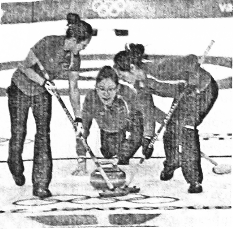题目内容
14.Shaking hands is a part of business life.and while it's a simple gesture,it's important to getit right Here are some tips to follow.(1)Make eye contact.The handshake is firstly a form of greeting and as such you are looking at the person to make a connection with him or her,beyond the immediate physical handshake.
(2)Introduce your self.A handshake is only part of the graeting process; combine it with an oral introduction or message.
(3)Use your right hand If you have something to do with your right hand,you should explain to him or her and say sorry while showing your left hand to him or her to get the forgiveness.
(4)Be firm and steady.No one likes a dead-fish handshake,but it's not a wrestling contest,either.The pressure you need to apply is about what you'd use to pick up a full drink bottle.
(5)BA few seconds is all that is needed.Your aim is to greet the person,not to trap him.
Here is something that you should not do.
(1)Squeeze lt's called a handshake,not a hand squeeze Squeezing can hurt the other person's hand,especially if he or she is wearing rings.
(2)Use a two-handed shake.Don't do that unless it's a person you know well.Between new acquaintances,the double-handed shake can be considered smarmy(讨好的).This also napplies to using the left hand to touch the person's shoulder.
(3)Use a dirty or sweaty hand.If you're nervous and your palm is sweat,press your palm against your leg to wipe it dry.
36.According to the passage,before a handshake,if you are doing something with your right hand,C.
A.you must stop doing it at once B.you can ask him or her to wait
C.you should explain and apologize D.you can use your left hand
37.What's the best title for point 5in the tips-to-follow part?B
A Greet the person B.Keep it brief.
C.Make your aim clear. D.Don't embarrass your hand-shaker.
38.According to the passage,if you shake hands with someone you meet for the first time,which of the following is polite to do?C
A.Use your two hands to show your respect.
B.Put your left hand on his or her shoulder when shaking hands.
C.Make sure that your hand is dry before shaking hands.
D.Use your right hand to squeeze his or her hand.
39.Which of the following is NOT mentioned in the passage?B
A.Where we should look when shaking hands.
B.Who should hold out his or her hand first to shake hands.
C.How much pressure should be used when you shake hands.
D.How long a handshake should last.
40.We can infer that the writer spurpose in writing this passage is toD.
A.tell us the importance of a great handshake
B.show us what kinds of handshakes are considered impolite
C.give us some tips on how to make a good first impression
D.give us some tips on how to shake harids properly.
分析 本篇文章将给出关于如何握手的建议并告诉我们握手时应该做到的和不该做的注意点.
解答 CBCBD
36.C 细节题.由第四段第二句"If you have something to do with your right hand,you should explain to him or her and say sorry while showing your left hand to him or her to get the forgiveness."可知,右手被占用时,应向对方道歉并取得原谅,所以C项符合题意.故正确答案为C.
37.B 推断题.第五点的意思是:握手只需持续几秒钟就够了,你的手是用来打招呼的,不是用来困住对方的.由此可推断第五点强调握手时间不能太长,简单快速地握手就够了,B项符合题意.故正确答案为B.
38.C 细节题.由最后一段最后一句"If you're nervous and your palm is sweat,press your palm against your leg to wipe it dry."可知C项正确.A项,由倒数第二段前两句"Use a two-handed shake.Don't do that unless it's a person you know well."可知A项错误.B项,由倒数第二段最后两句"Between new acquaintances,the double-handed shake can be considered smarmy(讨好的).This also applies to using the left hand to touch the person's shoulder."可知B项错误.D项,由倒数第三段第二句"Squeezing can hurt the other person's hand,especially if he or she is wearing rings."可知D项错误,故正确答案为C.
39.B 细节题.由第一点中的"you are looking at the person to make a connection with him or her"可知A项文章有提及.由第四点第二句"The pressure you need to apply is about what you'd use to pick up a full drink bottle."可知C项文章有提及.由第五点第一句"A few seconds is all that is needed."可知D项文章有提及.文章没有提到B项所说的内容,所以B项符合题意.故正确答案为B.
40.主旨题.由第一段最后一句"Here are some tips to follow."可知文章将给出关于如何握手的建议.下文给出了握手时应该做到的和不该做的注意点,所以全文主要是为了给出建议.D项符合题意,故正确答案为D.
点评 阅读理解题测试考生在阅读基础上的逻辑推理能力,要求考生根据文章所述事件的逻辑关系,对未说明的趋势或结局作出合理的推断;或根据作者所阐述的观点理论,对文章未涉及的现象、事例给以解释.考生首先要仔细阅读短文,完整了解信息,准确把握作者观点.

| A. | needn't | B. | won't | C. | shan't | D. | couldn't |
| A. | might | B. | had to | C. | should | D. | ought to |
 The centerpiece of curling(冰壶)is the curling stone,which has been called a"geometrical masterpiece of tooled geology (地质)."Kays of Scotland has been making curling stones since 1851,when William Kay and his sons Andrew and Thomas set up a workshop in Mauchline,Ayrshire,in southwest Scotland.Kays is still owned by the relatives of the founder,and today it is the only curling stone maker left in Scotland.
The centerpiece of curling(冰壶)is the curling stone,which has been called a"geometrical masterpiece of tooled geology (地质)."Kays of Scotland has been making curling stones since 1851,when William Kay and his sons Andrew and Thomas set up a workshop in Mauchline,Ayrshire,in southwest Scotland.Kays is still owned by the relatives of the founder,and today it is the only curling stone maker left in Scotland.